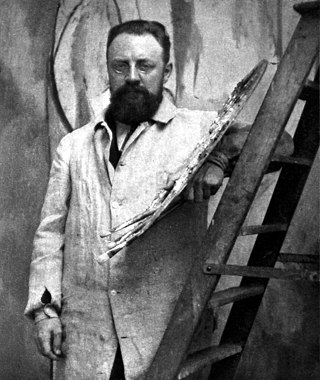
Henri Émile Benoît Matisse was a French visual artist, known for both his use of colour and his fluid and original draughtsmanship. He was a draughtsman, printmaker, and sculptor, but is known primarily as a painter.
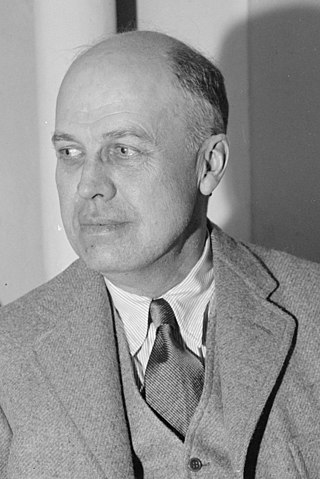
Edward Hopper was an American realist painter and printmaker. He is one of America's most renowned artists and known for his skill in capturing American life and landscapes through his art.

Joseph Mallord William Turner, known in his time as William Turner, was an English Romantic painter, printmaker and watercolourist. He is known for his expressive colouring, imaginative landscapes and turbulent, often violent marine paintings. He left behind more than 550 oil paintings, 2,000 watercolours, and 30,000 works on paper. He was championed by the leading English art critic John Ruskin from 1840, and is today regarded as having elevated landscape painting to an eminence rivalling history painting.

Visual art of the United States or American art is visual art made in the United States or by U.S. artists. Before colonization, there were many flourishing traditions of Native American art, and where the Spanish colonized Spanish Colonial architecture and the accompanying styles in other media were quickly in place. Early colonial art on the East Coast initially relied on artists from Europe, with John White the earliest example. In the late 18th and early 19th centuries, artists primarily painted portraits, and some landscapes in a style based mainly on English painting. Furniture-makers imitating English styles and similar craftsmen were also established in the major cities, but in the English colonies, locally made pottery remained resolutely utilitarian until the 19th century, with fancy products imported.

Henri-Edmond Cross, born Henri-Edmond-Joseph Delacroix, was a French painter and printmaker. He is most acclaimed as a master of Neo-Impressionism and he played an important role in shaping the second phase of that movement. He was a significant influence on Henri Matisse and many other artists. His work was instrumental in the development of Fauvism.

John La Farge was an American artist whose career spanned illustration, murals, interior design, painting, and popular books on his Asian travels and other art-related topics. La Farge made stained glass windows, mainly for churches on the American east coast, beginning with a large commission for Henry Hobson Richardson's Trinity Church in Boston in 1878, and continuing for thirty years. La Farge designed stained glass as an artist, as a specialist in color, and as a technical innovator, holding a patent granted in 1880 for superimposing panes of glass. That patent would be key in his dispute with contemporary and rival Louis Comfort Tiffany.

William Morris Hunt was an American painter.

Valentine Cameron Prinsep was a British painter of the Pre-Raphaelite school.

Frank Cadogan Cowper was an English painter and illustrator of portraits, historical and literary scenes, also described as "The Last Pre-Raphaelite".
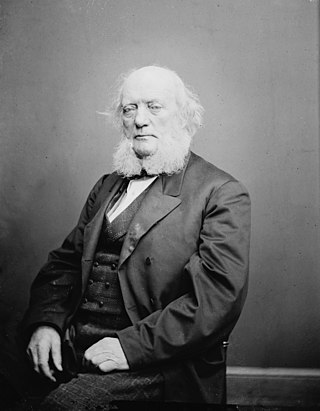
Chester Harding was an American portrait painter known for his paintings of prominent figures in the United States and England.

Robert Lewis Reid was an American Impressionist painter and muralist. His work tended to be very decorative, much of it centered on depiction of young women set among flowers. He later became known for his murals and designs in stained glass.

Frank Weston Benson, frequently referred to as Frank W. Benson, was an American artist from Salem, Massachusetts, known for his Realistic portraits, American Impressionist paintings, watercolors and etchings. He began his career painting portraits of distinguished families and murals for the Library of Congress. Some of his best known paintings depict his daughters outdoors at Benson's summer home, Wooster Farm, on the island of North Haven, Maine. He also produced numerous oil, wash and watercolor paintings and etchings of wildfowl and landscapes.

Edward Moran was an English-born American painter who specialized in marine art. He is best known for his series of thirteen paintings on the maritime history of the United States.

Duncan Max Meldrum was a Scottish-born Australian artist and art teacher, best known as the founder of Australian tonalism, a representational painting style that became popular in Melbourne during the interwar period. He also won fame for his portrait work, winning the prestigious Archibald Prize for portraiture in 1939 and 1940.

Robert Douglas Fry was an English Australian painter and illustrator, known for his paintings of animals, and especially horses.

Otto Stark was an American Impressionist painter, muralist, commercial artist, printmaker, and illustrator from Indianapolis, Indiana, who is best known as one of the five Hoosier Group artists. Stark's work clearly showed the influence of Impressionism, and he often featured children in his work. To provide a sufficient income for his family, Stark worked full time as supervisor of art at Emmerich Manual High School in Indianapolis from 1899 to his retirement in 1919, and as part-time art instructor on the faculty of the John Herron Art Institute from 1905 to 1919. Stark frequently exhibited his paintings at international, national, regional, and local exhibitions, including the Paris Salon of 1886 and 1887; the Five Hoosier Painters exhibition (1894) in Chicago, Illinois; the Trans-Mississippi Exposition (1898) in Omaha, Nebraska; the Louisiana Purchase Exposition (1904) in Saint Louis, Missouri; and international expositions (1910) in Buenos Aires, Argentina, and Santiago, Chile. He also supervised the Indiana exhibition at the Panama-Pacific International Exhibition (1915) in San Francisco, California. Stark remained an active artist and member of the Indianapolis arts community until his death in 1926.

Frederick Walker was a British social realist painter and illustrator. He was described by Sir John Everett Millais as "the greatest artist of the century".
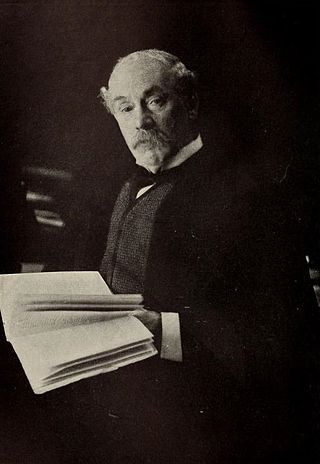
Sir Caspar Purdon Clarke was an English architect and museum director.

Walter Elmer Schofield was an American Impressionist landscape and marine painter. Although he never lived in New Hope or Bucks County, Schofield is regarded as one of the Pennsylvania Impressionists.
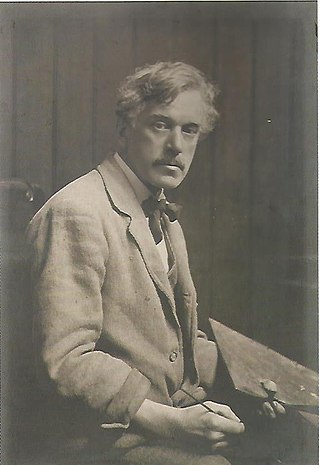
Edward Stott was an English painter of the late Victorian to early twentieth century period. He trained in Paris under Carolus Duran and was strongly influenced by the Rustic Naturalism of Bastien-Lepage and the work of the Impressionists, which he married with the English landscape tradition of John Linnell and Samuel Palmer. In the mid-1880s he settled in rural Sussex where he was the central figure in an artistic colony. His forte was painting scenes of domestic and working rural life and the surrounding landscapes often depicted in fading light. Stott's work achieved critical and commercial success at home and in Europe in his lifetime but his style of painting became unfashionable in the aftermath of the Great War and much of his work is now neglected and unconsidered.




















